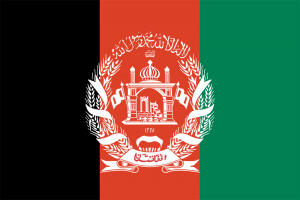Language/Central-pashto/Vocabulary/Numbers-11-20
| ◀️ Numbers 1-10 — Previous Lesson | Next Lesson — Subject-Object-Verb ▶️ |
Introduction[edit | edit source]
In this lesson, we will continue our exploration of Central Pashto numbers and counting. We will specifically focus on numbers 11 to 20. Numbers are an essential part of any language, and learning how to count in Central Pashto will enable you to communicate effectively in various situations, such as telling the time, giving your phone number, or discussing quantities. By the end of this lesson, you will be able to confidently count from 11 to 20 in Central Pashto, both in terms of pronunciation and writing in Pashto script.
Cultural Insight[edit | edit source]
Before we dive into the numbers, let's explore the cultural significance of numbers in Pashtun culture. Numbers hold great importance in Pashtun traditions and customs. Pashtuns often use numbers to symbolize various aspects of their daily lives and spiritual beliefs.
For example, the number 7 is considered to be sacred among Pashtuns. It represents the seven days of the week and is associated with good luck and prosperity. Similarly, the number 40 holds a significant place in Pashtun culture, symbolizing a period of purification and spiritual growth. Pashtun folklore and stories often revolve around these numerical themes, showcasing the deep-rooted cultural significance of numbers in the community.
Understanding the cultural context behind numbers in Central Pashto will not only enhance your language skills but also provide you with a deeper appreciation of Pashtun culture and traditions.
Numbers 11-20[edit | edit source]
Now, let's begin learning how to count from 11 to 20 in Central Pashto. We will provide you with the Central Pashto word for each number, its pronunciation, and the English translation. Practice saying these numbers aloud to improve your pronunciation. Additionally, pay attention to the Pashto script for each number, as it will help you recognize and write the numbers correctly.
| Central Pashto | Pronunciation | English |
|---|---|---|
| ١١ (Yāzārah) | /jaːzaːra/ | Eleven |
| ١٢ (Lewārah) | /lewaːra/ | Twelve |
| ١٣ (Drezārah) | /drezaːra/ | Thirteen |
| ١٤ (Cezārah) | /dzezaːra/ | Fourteen |
| ١٥ (Panzārah) | /panzaːra/ | Fifteen |
| ١٦ (Sholāzārah) | /ʃolaːzaːra/ | Sixteen |
| ١٧ (Shpāzārah) | /ʃpaːzaːra/ | Seventeen |
| ١٨ (Ozārah) | /ozaːra/ | Eighteen |
| ١٩ (Nuzārah) | /nuzaːra/ | Nineteen |
| ٢٠ (Yāzwā) | /jaːzwaː/ | Twenty |
Examples[edit | edit source]
Let's practice using the numbers we just learned in some example sentences. This will help you understand how to incorporate these numbers into everyday conversations.
- My brother is 14 years old.
- د ما ١٤ کلنه واله دی.
- Da mā 14 kalandā wāla dī.
- I have 17 cousins.
- زه ١٧ زهرانی لرم.
- Za 17 zahranay laram.
- She bought 19 apples from the market.
- هغه له بازار ١٩ میوه خریدو.
- Haghā la bāzār 19 mywah kharido.
- There are 20 students in the classroom.
- یوه ځای کلاس کی ٢٠ تلمیذه دی.
- Yawā zyāi klas ki 20 talimīza dī.
Exercises[edit | edit source]
Now, let's practice what we've learned so far. Fill in the blanks with the appropriate Central Pashto numbers from 11 to 20.
1. I have __________ books. 2. She has __________ cats. 3. We bought __________ apples. 4. There are __________ students in the school. 5. He is __________ years old.
Solution:
1. I have 12 books. 2. She has 15 cats. 3. We bought 17 apples. 4. There are 18 students in the school. 5. He is 20 years old.
Conclusion[edit | edit source]
Congratulations! You have successfully learned how to count from 11 to 20 in Central Pashto. Numbers are an essential part of language learning, and mastering them will greatly enhance your ability to communicate effectively in Central Pashto. Keep practicing these numbers in your daily conversations and try to incorporate them into various contexts to solidify your understanding. In the next lesson, we will continue our exploration of Central Pashto by diving into basic sentence structure. Stay tuned!
Other Lessons[edit | edit source]
- Locations
- Travel Essentials
- Relationships
- Action Verbs
- Languages jeba lesanewnh ژبی (لسانونه)
- House
- Directions
- Fruits
- Drinks
- Transportation
| ◀️ Numbers 1-10 — Previous Lesson | Next Lesson — Subject-Object-Verb ▶️ |

